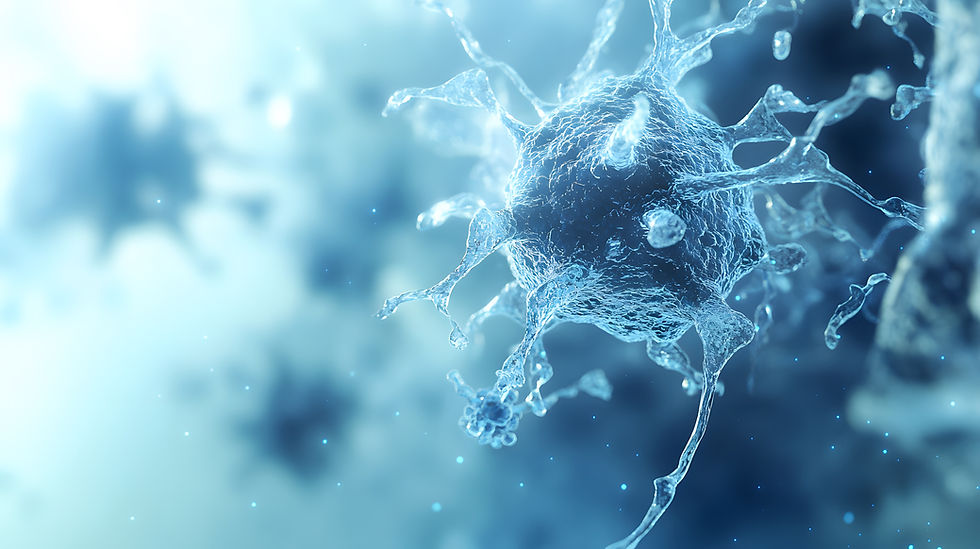
Who are we?
The PSCC is a Scientific Cooperation Foundation (FCS), a private non-profit organization serving the public interest.
Our founders include Gustave Roussy, Sanofi, Inserm, Université Paris-Saclay, and Institut Polytechnique de Paris, joined from the outset by key partners such as Unicancer, Institut Curie, AP-HP, and Medicen. These organizations reflect the quality and breadth of our network, covering the entire oncology value chain, from laboratory research to patient care.
From its inception, the PSCC has brought together academic, industrial, and institutional stakeholders to foster interactions and collaborations in oncology. We offer high-potential innovators a dedicated ecosystem of world-class experts, cutting-edge technologies, services, and infrastructures, along with unparalleled access to patient data and biological samples.
Ambition
The PSCC aims to transform the lives of millions of patients worldwide, both adults and children, while positioning France and Europe as global leaders in healthcare innovation. By strengthening the ability to translate academic research excellence into therapeutic and diagnostic solutions, we aim to significantly reduce the 20 million new cancer cases per year and 9.7 million cancer-related deaths worldwide, as well as mitigating the economic impact of cancer care for the 53.5 million patients currently living with cancer.
Our Model
In an era of virtual economies, the PSCC embraces physical proximity by creating a center of excellence at Campus Grand Parc in Villejuif. This hub is open to all stakeholders—academics, startups, industry leaders, patient organizations, service providers, and institutions—offering access to all essential resources for oncology innovation: Talents, Technologies, Networks & Partnerships, Funding Opportunities, Physical & Digital Infrastructures, Patient Data & Samples.
Interdisciplinary Approach
Interdisciplinarity is at the heart of the PSCC and an absolute necessity for tackling a multi-parametric disease like cancer. By design, the cluster unites diverse scientific disciplines (biology, mathematics, physics, artificial intelligence) and spans multiple application areas (therapeutics, diagnostics, medical devices, digital health).
A One-Stop-Shop for Innovators
To succeed, innovators need expertise, resources, and efficiency. The Support & Orientation Office (SOO) acts as a one-stop-shop for innovation, coordinating interactions between start-ups, academic institutions, and industry experts. It facilitates access to funding, partnerships, and cutting-edge technological platforms, ensuring that each project maximizes its potential.
A Selective Approach
The PSCC focuses its resources where they can have the greatest impact—on early-stage projects (ideation, creation, pre-seed, seed, and acceleration phases) that demonstrate high scientific creativity and strong diagnostic or therapeutic potential. These projects undergo rigorous selection by an independent committee of academic and industry experts to ensure their scientific excellence and transformative potential for patient care.
The PSCC acts as a catalyst, transforming breakthrough approaches into industrial therapeutic and diagnostic solutions for cancer patients.

The challenge
More progress has been made in oncology since the turn of the century than in 2000 years: mortality has fallen [1] (for all cancers combined, the 5-year survival rate has risen from 25% to over 50%), discoveries are proliferating and the number of clinical trials [2] and new drugs [3] continues to rise: over 2,000 new clinical trials in oncology are due to start in 2023, with new methods and significant promise for cancer treatment. But the battle is far from won. Cancer remains the second leading cause of death in the world and the leading cause of death in developed countries [4]. The number of new cases is rising sharply because of ageing and population growth, and survival rates now vary from almost 100% to 0% depending on the type of cancer. In children and adolescents, there are 35,000 new cases a year in Europe (1,800 in France) and over 60 different types of cancer, different from those in adults.
The major lesson to be learned from the last 30 years of research and innovation is that cancer is far more complex than we ever imagined. To overcome this complexity, we need boldness and creativity, but also a great deal of know-how and collective intelligence.
To accelerate the development of innovative diagnostic and therapeutic solutions, the PSCC is giving innovators (project leaders, start-ups, entrepreneurs and industrialists) access to the best experts in the field, to disruptive technologies and to the data, samples, space and network that will determine their success.
[1] Global Cancer Observatory; IARC, WHO
[2] Clinicaltrials.gov
[4] Variations in common diseases, hospital admissions, and deaths in middle-aged adults in 21 countries from five continents (PURE): a prospective cohort study; GR. Dagenais et al, Lancet, March 2020
The Foundation’s Boards and Committees
The Scientific and Technological Advisory Board (SAB)
The Project Evaluation Committee (PEC)
The Data Committee
The Investment Committee
Made up of independent experts, this committee relies on ad hoc specialists to evaluate the PSCC's investments, particularly those relating to technology platforms, and to validate both their response to a scientific need and their financial sustainability.
The Audit Committee
Made up of independent experts, this committee ensures that the Foundation operates smoothly, and that its legal and accounting management processes comply with the Foundation's statutory, legal and regulatory obligations.
The Ethics Committee
Made up of independent, multi-disciplinary experts, this committee makes recommendations on all the Foundation's ethical issues.

Governance
The PSCC operates as a Scientific Cooperation Foundation (FCS)—a private, non-profit entity serving the public interest.
Board of Directors (CA):
The Board brings together eminent figures from scientific, academic, industrial, and institutional backgrounds.
-
Sanofi – Christian Deleuze (SVP, Deputy General Manager for Innovation)
-
Université Paris-Saclay – Camille Galap (President)
-
Inserm – Didier Samuel (President-Director General)
-
Institut Polytechnique de Paris – Thierry Coulhon (President)
-
Gustave Roussy – Fabrice André (Director of Research)
The Board is chaired by Eric Vivier, PU-PH in Marseille and co-founder and Scientific Director of Innate Pharma.
Alongside the founders, the governance team is strengthened by leading figures and organizations from the academic, scientific, industrial and institutional worlds:
-
Sophie Beaupère (General Delegate, Unicancer)
-
Milan Lazarevic (Director of Research & Innovation, AP-HP)
-
Claire Rougeulle (Director, Institut Curie Research Center)
-
Louis Schweitzer (Former CEO of Renault, Former General Commissioner for Investment)
-
Servier – Claude Bertrand (EVP, R&D)
-
Merck France – Thierry Hulot (President & Managing Director)
-
Villejuif Municipality – Pierre Garzon (Mayor)
-
Île-de-France Region – Othman Nasrou (VP for Research & Higher Education)
-
Faculty Representative: Cloé Giquel
-
French Government Representative: The Rector of Île-de-France (Government Commissioner)
Patient partnership
Paediatric cancers
The PSCC relies on academics, industrialists and patient associations heavily involved in the fight against paediatric cancers to ensure that paediatric cancers and their specific features are taken into account, organizes actions to raise awareness among the players in the in the PSCC ecosystem and helps to speed up innovation against these particular cancers.














